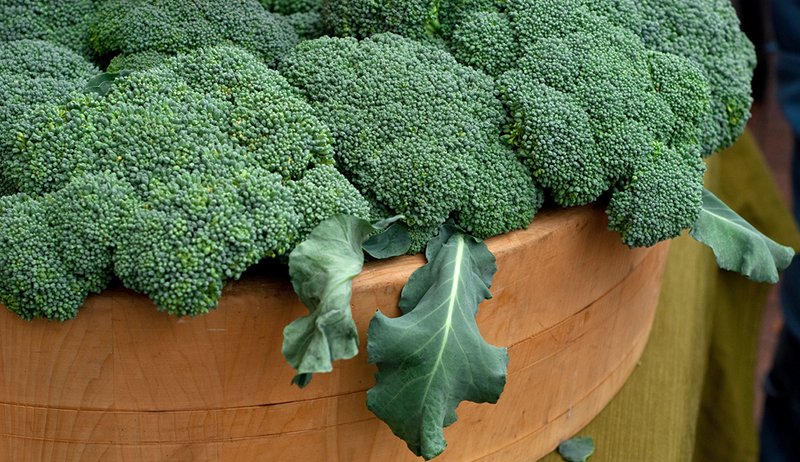
Among market gardeners, long-season crops are slowly dying out. That goes for storage potatoes, sweet corn, broccoli, cabbage and a host of others. The reason is simple: profitability. When you can make $1,500 on a bed of baby greens and turn it over two or three or four times in a season, why grow a heavy feeder such as cauliflower that takes a third or half the season for a few hundred bucks?
Although broccoli and cabbage will never pay you what spinach and lettuce will, there are ways to grow these more demanding crops that will, at very least, make growing them not seem like such a waste. Quite the opposite, really; growing some of these crops can add real value to your market table.
Why Grow Long?
Customers love options. They don’t love to be overwhelmed by them, but they do like seeing a new crop here or there. Especially if you run a CSA, but even if you don’t, having new and interesting foods can excite your patrons, draw new ones in and keep them coming back.
Also, many of the long-season crops are storage crops, including garlic, potatoes and onions. This will give you many opportunities to sell them over the season. With less perishability, you can charge a little more and sell them a little longer to make up for the space they take up in the garden. And cooks need these crops: It’s the rare patron that couldn’t use some onions or garlic.
Set It & Forget It
The first rule in making longer-season crops profitable is to spend as little time on them as possible. Again, watermelons are never going to bring per pound what spinach will, though it’s fun to imagine a 10- or 20-pound watermelon selling for $7 a pound! However, the best way to increase your profit on whatever you do sell them for is to plant into plastic mulches, paper mulches or even landscape fabric with holes cut out for spacing.
The idea here is to keep the weed pressure down so you don’t spend any time weeding. The goal is to do little more than plant and pick—nothing else. Lowering your labor all the way around will help allow you to grow these crops more profitably.
Intercropping
Growing two different crops in the same bed is a great way to make better use of space. So when you’re growing something slow and bulky such as cabbage or broccoli, consider sowing a quick round of radishes in between, or plant some lettuce with your leeks. Radishes and lettuce are fast and profitable, and will ultimately help that bed be worth a little more.
Paying Rent
Another way to make the most out of all of your crops is to make each section of your garden pay rent. That is, give each area a value based on what you need to make—your farm budget—and figure out how to make each section earn that amount. This way, you’re taking the pressure off of the individual crop. So maybe if you choose to grow storage potatoes somewhere, follow them with a couple quick crops of lettuce, spinach, radishes, beets or whatever is profitable in your area. This will help to boost the value of that bed.
Presale
One great way to keep crops from becoming unprofitable is to have them sold already. Don’t grow anything you can’t sell, especially if it doesn’t make you money. This may involve talking to chefs before the season starts, and growing a few specialty items for them—so long as they still buy the profitable stuff. I hesitate to suggest wholesaling to stores because the price will then be even further reduced, but if you can get a decent price while limiting the time spent on marketing, it may be worth it.
Go Green(house)
Keeping your garden inside for as long as possible is another good way to add value. In the spring, for instance, if you can get a crop in and out of the bed where you may be planting something like longer season can add a lot of value. While the broccoli, for instance, continues to grow in the greenhouse, the bed it will go into is working hard.
This is where potting-up comes in handy. Moving transplants to bigger pots and letting them mature a while longer in the greenhouse can buy you a week or more to use that garden space. That said, soil blocks can be labor- and time-intensive, so make sure your method is economically worth the work.
Extend The Season
Lastly, if you really want to make money selling space- or labor-intensive crops, have them when no one else does. This gives you a better shot at selling everything you bring, while giving you the ability to charge a little more for the novelty. I wouldn’t, however, grow unprofitable crops with added energy inputs. Growing Brussels sprouts in a heated high-tunnel, for instance, is not a profitable approach unless you want to charge $25 a pound or more.
This article originally appeared in the January/February 2017 issue of Hobby Farms.




